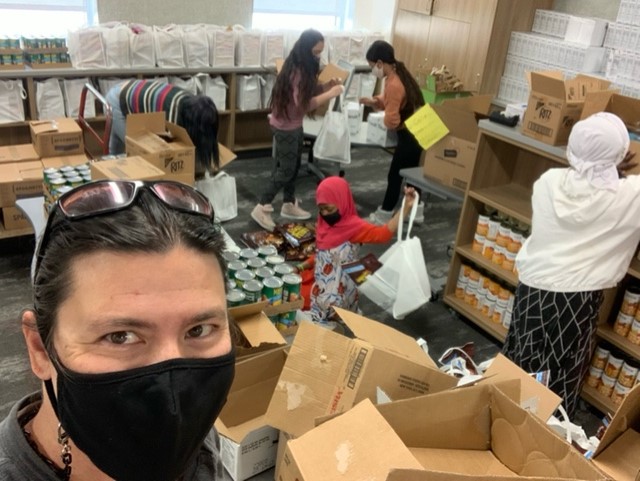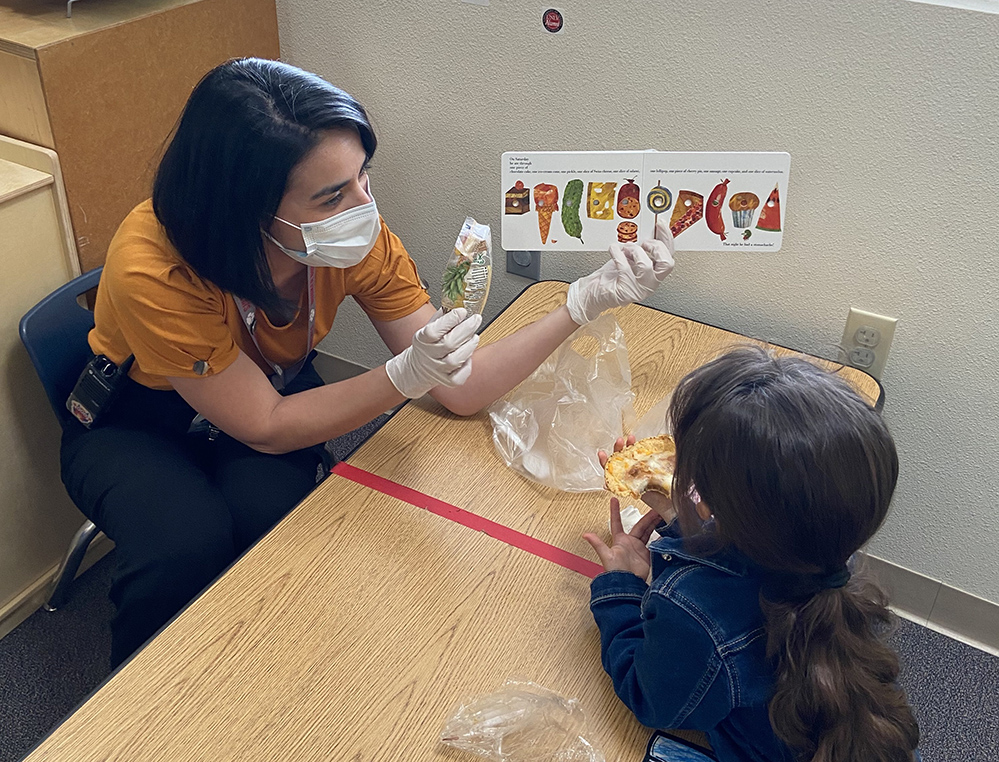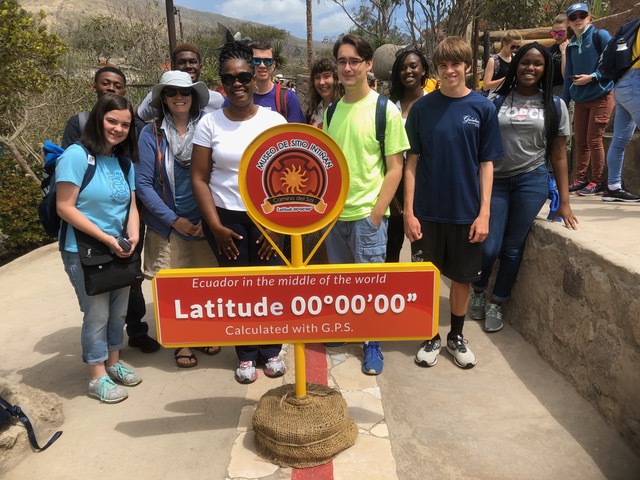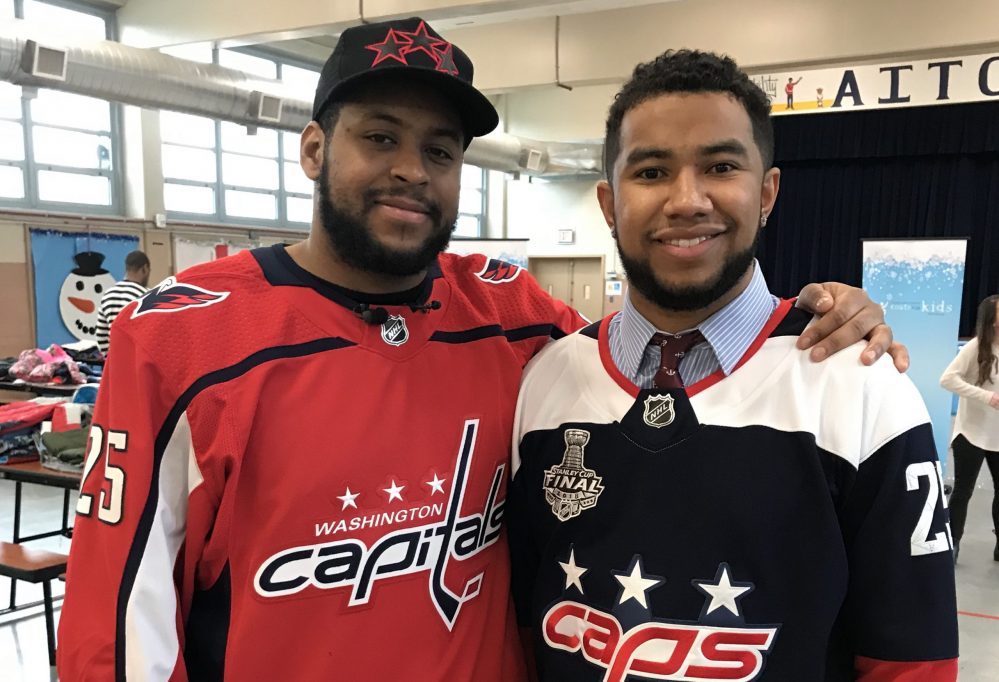Four Finalists for Teacher of the Year Answer the Question: What’s it Like to Lead Classes During the ‘Worst Year Ever’?
By Linda Jacobson | May 2, 2021
Updated May 6
Juliana Urtubey — pre-K-to-5 special education teacher from the Clark County School District in Nevada — is the National Teacher of the Year, the Council of Chief State School Officers announced today on CBS This Morning.
First lady Jill Biden surprised Urtubey at Booker Elementary School to make the announcement.
Urtubey works with classroom teachers to improve instruction for students with special needs.
“I get to be part of a whole new world with so many students,” she told host Gayle King about her love for teaching, adding that her students “have made that same kind of impact on my life.”
John Arthur, Utah’s Teacher of the Year, recently received a visit from a former student at Meadowlark Elementary School in Salt Lake City. Addressing him as “Captain” — the nickname students gave him based on a manga character — the eighth grader didn’t mince words.
“What’s it like being the teacher of the worst year ever?” he asked.
Arthur emphasized the positive. He worked on becoming more dynamic, using song, dance and stories to maintain his students’ interest during the long, lonely days of Zoom. And on Wednesdays, he and a few students jump in his car after school to deliver math and science materials and meals to the doorsteps of students learning from home.
“I got into this out of a love of teaching,” said Arthur, whose parents wanted him to become a doctor. “I believe in public service, and never will that service mean more than it does this year.”

Arthur — along with Alejandro Diasgranados of the District of Columbia, Maureen Stover of North Carolina and Juliana Urtubey of Nevada — are candidates for National Teacher of the Year, which the Council of Chief State School Officers is expected to announce this week. In their own way, each would likely echo Arthur’s sentiment: Even the best educators had to learn new skills this past year to connect with students.
“We are welcomed guests in families’ homes. We got to peek in and see what it looks like,” said Urtubey, a pre-K-5 special education teacher who supports 10 classrooms at Booker Elementary School in the Clark County School District, which includes Las Vegas.
She watched a mother, father, grandmother and cousin take turns helping a student with autism during distance learning so the responsibility wouldn’t fall on one family member, and witnessed other parents upend their work schedules to stay home with their children.
“Not a day goes by that a teacher doesn’t tell me something awesome their families did,” Urtubey said.

She was trained as a bilingual teacher in Arizona — just as the state implemented Proposition 203, requiring English as the only language of instruction.She gravitated to special education because of a provision in the law allowing students with disabilities to receive bilingual services.
One day, she had an “aha” moment about the potential of all students to learn: She caught a fifth grader, who couldn’t read at a kindergarten level, “running a business out of his backpack.” He sold pencils, erasers and snacks, keeping a balance sheet to track revenues and expenses.
“He planted a seed,” she said. “I was like, ‘OK, let’s figure out a way to use this for academic intervention.’”
Unlocking the magic
At Cumberland International Early College High School, located on the campus of Fayetteville State University, a lot of Stover’s students enter ninth grade needing intervention. The state’s early college high schools target students from underrepresented minority groups in line to be the first in their families to attend college.
The students who thrive in the model are “motivated, but behind,” Stover said. “There is magic in them that we can unlock.”
A former intelligence officer in the U.S. Air Force who served in the Middle East, Stover teaches biology, environmental science and a class that prepares students for college. When her students transitioned to distance learning, the casual interactions she shared with them in the classroom and eating lunch together in the student union stopped.
Over Zoom, many clammed up. She encouraged them to bring their pets on screen and gave them a virtual tour of the raised beds in her backyard, using the outdoors to spark conversation and teach a lesson on photosynthesis.
One outcome of remote learning, she said, is that students have learned some “digital citizenship,” such as not showing their house number on social media and recognizing that a classmate’s joke in the chat field can sometimes be taken the wrong way.
They’ve collaborated on projects remotely through videos and documents. For years, educators would talk about 21st century skills, but “it always felt really forced,” Stover said. “Now my kids have those skills.”

‘Their voice can make change’
In northeast D.C., Diasgranados’s fourth and fifth graders at Aiton Elementary School have sharpened advocacy skills they’ve been learning since second grade when he began moving with them from one grade to the next.
A letter from the students explaining that many lacked devices for remote learning caught the attention of a producer for The Drew Barrymore Show on CBS. In October, Barrymore featured Diasgranados as a guest and purchased laptops for every student and staff member.
In past years, his students have written to the Washington Football Team, explaining how unwashed clothes contribute to chronic absenteeism. The team donated $10,000 for a school laundry. And when Washington Capitals forward Devante Smith-Pelly faced racist taunts at a game in Chicago, the students wrote him letters of support. Smith-Pelly visited the school and donated coats to the students.
“My students are activists,” Diasgranados said. “They really understand their writing and their voice can make change.”

Unlike most teachers this school year, Diasgranados didn’t have to form new relationships with students he’s never taught before. He already had numbers for grandparents, aunts and uncles he called when he couldn’t find students during the early months of the pandemic.
But teaching remotely in one of D.C.’s poorest neighborhoods — even with the laptop donation — was no less challenging. As children of essential workers, a lot of his students have had to connect to school from their parents’ jobs or a city bus.
Aiton was holding a talent show March 13 last year when texts about school shutting down began pouring in. Diasgranados started to get emotional and gave more hugs and took more selfies than normal.
“They didn’t really understand what was going on,” he said. “I remember telling them to take as many books home as they could.”
Lead Art: Alejandro Diasgranados, Juliana Urtubey, John Arthur and Maureen Stover. (Council of Chief State School Officers)
Get stories like these delivered straight to your inbox. Sign up for The 74 Newsletter

